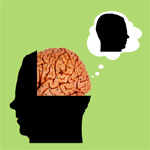I do not expect a theory of personhood to match all our pre-reflective philosophical intuitions, even if deeply considered and strongly felt (especially if strongly felt!) for two reasons: (1) our best intuitions on this subject are demonstrably unreliable, and (2) billions of otherwise sane and competent people hold beliefs about personal identity which are unsupported by empirical evidence, but to which they have strong emotional attachment. These two facts strongly suggest that there is something wrong with what we are naively inclined to believe about our identity. Hence we should not be surprised to find that a satisfactory solution, when it is found, will at first seem counter-intuitive. Continue reading “Towards a Scientific Theory of Persons”
Persons in Law
 We cannot understand the self by examining people in isolation. Too many important aspects of personhood only appear in a social context.
We cannot understand the self by examining people in isolation. Too many important aspects of personhood only appear in a social context.
Thomas Metzinger’s work describes the self-model in which our ideas about ourselves are rooted. The model is (usually) transparent, in that we operate through it without (usually) any awareness of a distinction between the model and the underlying reality. It is a model to which we have a profound emotional attachment—most of us care, deeply, about ourselves in the past, present, and future. As a result, our self-models are motivational. They spur and shape our actions. We evaluate possible courses of action by putting our self-models through various simulations, and responding emotionally to the different outcomes we imagine. The research of Antonio Damasio has begun to show how our emotions must inform our executive decision-making processes in order for us to make what are commonly recognized as ‘rational’ decisions.
Most of what Metzinger and Damasio have to say about the self is as true of isolated individuals as of human beings immersed in society. But a case can be made that the concept of the self could only have emerged in a social context. I have argued that our concepts, particularly the entities recognized by our ontology, reflect what is important to us. The spatio-temporal boundaries between ‘things’ are artificial, not natural; they do not exist in nature, but are imposed upon nature by human beings. A person is an entity whose boundaries roughly coincide with those of a human biological organism. A person is commonly considered to begin sometime around birth; sooner in some traditions, later in others. The person is usually thought to persist until biological death; but many people believe that it continues much longer than that; and some believe that if the organism is sufficiently damaged, then the person may cease to exist before its organism dies.
Among other things, a person is a unit of moral and legal responsibility—a bearer of enduring rights and privileges, duties and obligations, merits and demerits, assets and liabilities, debts and credits. Those attributes of individual persons result from, and depend on, the fact that individuals are members of a larger society. If a human being is isolated for a long time from other human beings, legal obligation disappears from his life, and moral obligation, if it does not entirely disappear, is vastly curtailed. I would not go so far as to say that an isolated human being ceases to be a person; only that certain central and important aspects of personhood simply disappear from his or her life. Having moral and legal rights and obligations is a central and important aspect of personhood. Continue reading “Persons in Law”
Metzinger on the Unreality of the Self
 In the last chapter of Being No One, Thomas Metzinger addresses the questions with which he introduced the book, a list that includes:
In the last chapter of Being No One, Thomas Metzinger addresses the questions with which he introduced the book, a list that includes:
What is phenomenal selfhood? What, precisely, is the nonconceptual sense of ownership going along with the phenomenal experience of selfhood, or of “being someone”?
In the discussion, he makes a striking comment related to the reality of the self. If the phenomenal self-model (PSM) is “of a nonhallucinatory kind”:
…the system then represents certain aspects of reality as being parts of itself, and it does so correctly. What it achieves is not only self-experience but self-knowledge. (Metzinger 2004, p 607)
In reading this passage, I wondered how Metzinger can reconcile it with his claim that ‘no such things as selves exist in the world.’ Here he says that the system represents itself to itself by means of its PSM, and that it does so “correctly.” Metzinger certainly admits that systems exist. Are we not, then, such systems? Continue reading “Metzinger on the Unreality of the Self”
A Special Form of Darkness: Metzinger on Subjectivity
O ur brains represent ourselves, to ourselves, by means of a Phenomenal Self-Model (PSM). According to Thomas Metzinger, the PSM is characterized by transparency, and a phenomenal quality of ‘mineness.’ Its transparency consists in our unawareness of it as a model. We look and act ‘right through it’ – we take our models for our real selves. ‘Mineness’ is a quality that infuses all of our experience which we take to be experience of ourselves. Although Metzinger uses the terms “mineness” and “ownership,” it is more than an experience of ownership. I think “me-ness” aptly captures what Metzinger is after. Continue reading “A Special Form of Darkness: Metzinger on Subjectivity”
ur brains represent ourselves, to ourselves, by means of a Phenomenal Self-Model (PSM). According to Thomas Metzinger, the PSM is characterized by transparency, and a phenomenal quality of ‘mineness.’ Its transparency consists in our unawareness of it as a model. We look and act ‘right through it’ – we take our models for our real selves. ‘Mineness’ is a quality that infuses all of our experience which we take to be experience of ourselves. Although Metzinger uses the terms “mineness” and “ownership,” it is more than an experience of ownership. I think “me-ness” aptly captures what Metzinger is after. Continue reading “A Special Form of Darkness: Metzinger on Subjectivity”
Metzinger: Being No One
 Being No One is a substantial work by German philosopher Thomas Metzinger about “consciousness, the phenomenal self, and the first-person perspective.” Its main thesis “is that no such things as selves exist in the world. Nobody ever was or had a self.”
Being No One is a substantial work by German philosopher Thomas Metzinger about “consciousness, the phenomenal self, and the first-person perspective.” Its main thesis “is that no such things as selves exist in the world. Nobody ever was or had a self.”
I have spent some time with the book, making, from its 634 densely-printed pages, 104 pages of notes. After all that, I still question Metzinger’s ‘main thesis.’ But I have no doubts about the value of the book. It irrevocably raises the standard for what philosophy of mind must explain. In its early pages, Metzinger echoes Paul Churchland’s complaint, that “theoretical approaches to the mental, still intuitively rooted in folk psychology, have generated very little growth of knowledge in the last twenty-five centuries.” Being No One goes a long way towards burying that era. Continue reading “Metzinger: Being No One”
Rationality and its Limits
 Rationality depends on emotion. A.R. Damasio’s Descartes’ Error – Emotion, Reason and the Human Brain reveals how the human ability to make rational, prudent choices fails unless it is supported by normal emotional responses. His findings fly in the face of conventional wisdom which portrays emotions as enemies to reason – impulsive forces which urge us to make poor choices, and which must be held in check by cool logic and deduction.
Rationality depends on emotion. A.R. Damasio’s Descartes’ Error – Emotion, Reason and the Human Brain reveals how the human ability to make rational, prudent choices fails unless it is supported by normal emotional responses. His findings fly in the face of conventional wisdom which portrays emotions as enemies to reason – impulsive forces which urge us to make poor choices, and which must be held in check by cool logic and deduction.
Damasio shows that rational behaviour results from a bottom-up process that begins with subconsciously learned emotional responses that can be detected in galvanic skin responses (GSR’s), and other physical signs. This unconscious learning preceeds, and helps to facilitate, cognitive learning.
Moreover, people require these learned emotional responses to make rational, self-interested choices, even after they have cognitively ‘figured out’ what choices are in their interests.
Both results seem counterintuitive, the latter most strikingly. Most people who consider themselves sane think that if they know what is in their best interests, they will choose accordingly. They won’t, says Damasio, unless that knowledge is supported by feeling. Continue reading “Rationality and its Limits”
Human Replication Technology, Update 2010: Replicating the Brain
 Successful replication of a mature human brain – one that we would accept as a replacement for our own, or for the brain of someone we love – must preserve almost all the connections within it. Connections embody the psychological properties that make human individuals who they are: memories, learned abilities, habits, associations, talents, and emotional responses.
Successful replication of a mature human brain – one that we would accept as a replacement for our own, or for the brain of someone we love – must preserve almost all the connections within it. Connections embody the psychological properties that make human individuals who they are: memories, learned abilities, habits, associations, talents, and emotional responses.
In an organ such as the liver, it doesn’t matter that two particular cells are adjacent, because the liver is not a communications network. In the brain, the physical arrangement of individual cells matters very much. All our psychological attributes – the differences between the minds of an Einstein and a Hitler – are instantiated in that physical relationship. Continue reading “Human Replication Technology, Update 2010: Replicating the Brain”
The Neurology of Anticipation
 In the previous post, I asked what is the difference between having a painful experience myself and feeling sympathy for someone else’s pain. The answer seems pretty clear. My experience of my own pain is neurologically ‘hard-wired’, but there is no direct neural connection between other persons and myself which exposes me to their pain. Things could have been different. If we, like the Na’vi of the movie Avatar, had the physiological equivalent of USB-ports which allowed us to connect our nervous systems at will, then we could experience the pains, pleasures, and other sensations of other people while we were connected to them. The ‘privacy’ of our minds is an anatomical limitation, not a metaphysical necessity.
In the previous post, I asked what is the difference between having a painful experience myself and feeling sympathy for someone else’s pain. The answer seems pretty clear. My experience of my own pain is neurologically ‘hard-wired’, but there is no direct neural connection between other persons and myself which exposes me to their pain. Things could have been different. If we, like the Na’vi of the movie Avatar, had the physiological equivalent of USB-ports which allowed us to connect our nervous systems at will, then we could experience the pains, pleasures, and other sensations of other people while we were connected to them. The ‘privacy’ of our minds is an anatomical limitation, not a metaphysical necessity.
A parallel question can be asked about future experience. What is the difference between anticipating my own pain and having sympathy for a friend whose pain I can foresee? As in the case of present pain, there is a vivid difference in my experience between anticipating having pain, and expecting you to have pain. There is nothing resembling a direct neural connection between myself, now, and myself in the future, to explain this difference. Nevertheless, neuroscience can help us understand it: why it is so vivid, why expectation of my own pain makes me anxious rather than just sympathetically concerned, why foreseeing pain in my own future feels like an unavoidable problem for me in a way that foreseeing your pain does not.
Another difference is that sympathy for others, unlike self-concern, seems at least partially under conscious control. When we feel we cannot afford it, we tend to dial it down or switch it off altogether. It feels optional, in contrast to the sense of unavoidability that clings to self-concern.
In his book, Hardwired Behaviour, Laurence Tancredi of the New York University School of Medicine offers some clues to an answer from a neurological perspective. The engine of self-concern is a cyclical interaction between the limbic system, which generates our emotions (giving emotional ‘meaning’ to experience), and the prefrontal cortex, which makes plans and decisions. Continue reading “The Neurology of Anticipation”
Coed – episode 2
This is episode 2 of a short story about fusion – two persons coming together to share one body. If you haven’t yet read episode 1, start here.
 When consciousness returns, May finds it cluttered, like a room in which she can’t find something she’s looking for. Adrift in the jumble, she clutches at anything familiar. She knows she’s in the lab – she remembers the looming, blinking machines. Other, more important things are hidden. She can’t recall her age.
When consciousness returns, May finds it cluttered, like a room in which she can’t find something she’s looking for. Adrift in the jumble, she clutches at anything familiar. She knows she’s in the lab – she remembers the looming, blinking machines. Other, more important things are hidden. She can’t recall her age.
She used to sail with her dad up and down Ghost Lake, in strong winds. If she was scared, she only needed to look at his face. He grinned at the sun and wind, embracing any weather. He worked in forestry. The memory of a year ago chills her, like a snow cloud blown over the sun. A sudden headache at breakfast, her mother said. Then he doubled over and vomited on the floor. How could that happen?
The enormous prickly helmet, she notices with relief, has been removed. Stretching, wriggling her toes, she grows annoyed that no one is there to attend to her. She cranes her neck, looking for her clothes. She can’t remember what she wore to the lab.
I am now familiar with the entire literature on hemispheric specialization, she thinks, to comfort herself. Or most of it anyway. I’m a leading expert in computational neuroscience. Now I know descriptive and inferential statistics, and ASL. She pictures Nina and Tina going through their intricate routines. But the meanings are as dark as ever. I don’t know ASL! she realizes in astonishment. Didn’t Jerry know it?
There was never enough time, she answers herself defensively.
Nervous, she wishes Sam would come with her clothes – whatever they were. She vaguely recollects a purple departmental T-shirt, which needed washing, with a picture of a nerve cell. But that wasn’t mine! She even remembers its sour smell as she pulled it over her head. It must have been mine. And down, over her flat, sparsely-haired chest…. Continue reading “Coed – episode 2”
Coed – episode 1
“Coed” is a fictional exploration of fusion – two persons coming together to cohabit in a shared body. Fusion cases are more complex than fission, involving greater discontinuities, botb physical and psychological. You may find that contemplation of fusion cases fosters real doubt as to whether two persons are present, or one.
 She knows he’s in there – she can see him brokenly through the office door’s bevelled glass, framed and backlit by the window, inert in his chair. “It’s me, May,” she calls softly, not wanting to attract attention in the hallway.
She knows he’s in there – she can see him brokenly through the office door’s bevelled glass, framed and backlit by the window, inert in his chair. “It’s me, May,” she calls softly, not wanting to attract attention in the hallway.
The last thing Jerry wants now is to be bothered by students. With time suddenly so precious to him, he is not prepared to squander it on their all-too-protean intellects. The knob rattles, making him seethe. Typical of students nowadays; they’ll barge in anywhere. They hardly care which washrooms they use. Even May startled him at the urinal, once. They were both convulsed by giggles, meeting like that. He scolded her, but she didn’t care. Abruptly, it occurs to Jerry that it’s probably May now – she said she’d drop by this afternoon.
At last she sees the fragmented figure inside lurch to its feet, lean towards the door.
He was right – May stands there with her shining golden hair and the essay-in-progress which has been her excuse for visiting him during the entire term. Playfully, she kicks the door closed behind her.
Instead of reaching out to her, Jerry stands listlessly, his arms limp. She wonders what’s wrong.
He realizes he will lose this too. In six months – a year at most – she will avoid his gaze. Not only she, but all the other tantalizing female students. And even the ones that aren’t tantalizing. But now she is waiting for him, to say something. “How much have you written since last time?” His tone is collegial, only a little condescending.
“Nothing,” she admits without a trace of guilt. She dares him with her eyes to reprimand her, but her playful invitation is rebuffed.
That’s how he feels about her too – absolutely guiltless. It’s a wonderful relationship, even more so than his relationship with Carole, which he once thought wonderful enough to justify the unpleasantness and expense of a divorce. And now when he has achieved this, and so much else – when his life has at last taken a finished shape, with full-professor status, four-month European vacations, and a conscience mature enough to allow him the things he really wants – now, at age forty, it’s over. Continue reading “Coed – episode 1”

